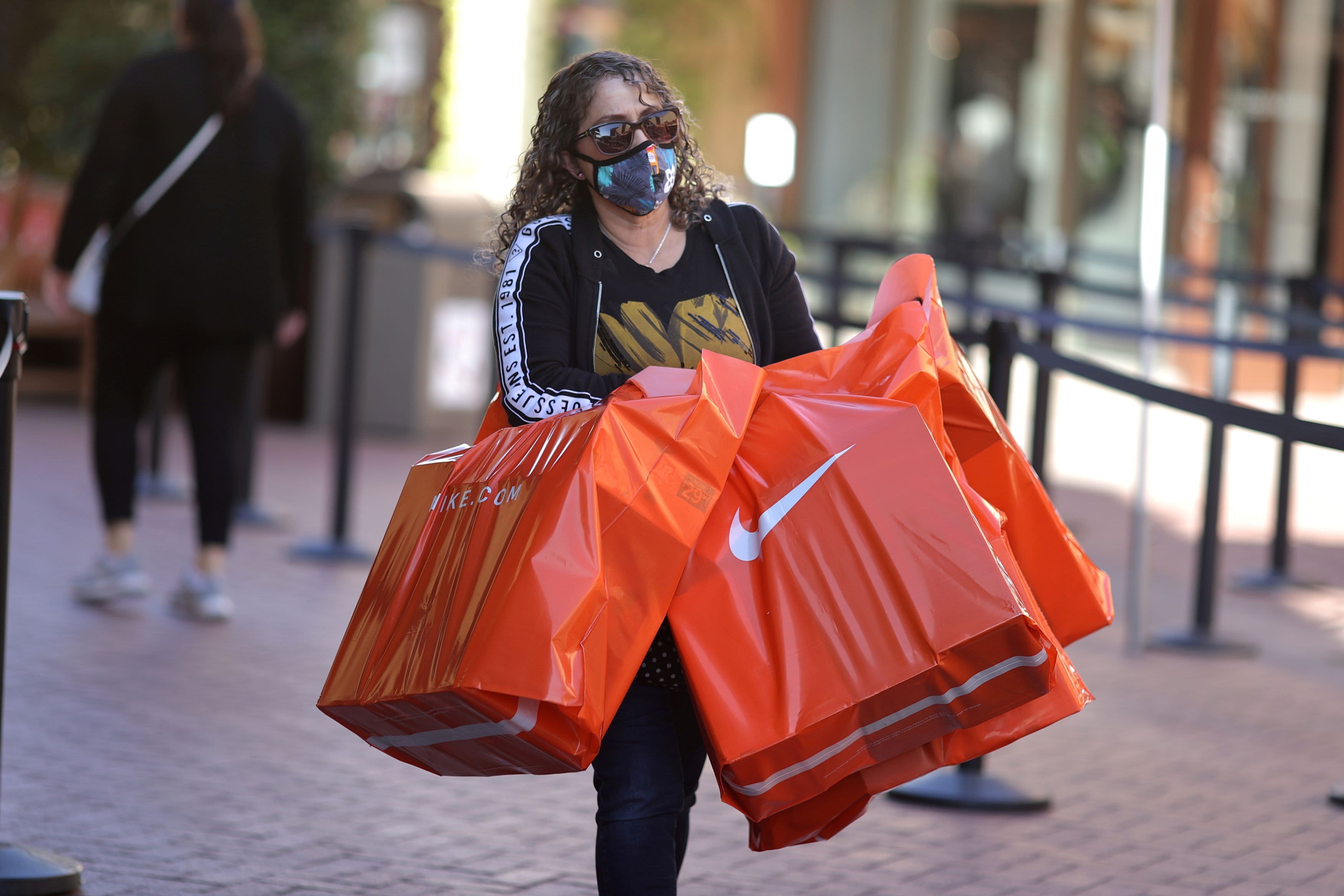
A woman carries Nike shopping bags at the Citadel Outlet mall as the global coronavirus disease (COVID-19) outbreak continues in Commerce, California, Dec. 3, 2020.
Lucy Nicholson | Reuters
US retail sales declined further in December as new measures to slow the spread of COVID-19 undercut restaurant spending and reduced traffic to shopping centers, the latest sign that the economy slowed significantly in late 2020.
Retail sales fell 0.7% last month, the Commerce Department said Friday. The data for November was revised down to show sales fell 1.4% from 1.1% as previously reported. Economists polled by Reuters had predicted retail sales would remain unchanged in December.
Excluding automobiles, gasoline, construction materials and food services, retail sales fell 1.9% last month after a downwardly revised decline of 1.1% in November. These so-called core sales correspond most closely to the consumer spending component of the gross domestic product. They were previously estimated to have declined by 0.5% in November.
The report followed in the wake of news last week that the economy was cutting jobs for the first time in eight months in December. More jobs are likely to be lost in January as the number of new claims for unemployment benefits has risen sharply in the first week of the month. The data is in line with economists’ expectations for a sharp slowdown in economic growth in the fourth quarter.
Rampant coronavirus infections and government delays in approving more money to help businesses and the unemployed are behind the loss of economic momentum. The government provided nearly $ 900 billion in additional pandemic relief at the end of December.
President-elect Joe Biden on Thursday unveiled a $ 1.9 trillion fiscal stimulus plan that includes strengthening the response to the virus and direct assistance to households and small businesses. The proposed additional relief and acceleration of vaccine deployment are expected to boost spending and the economy in the second half of 2021.
Fourth quarter growth estimates are around 5% year-on-year, largely due to an inventory build-up.
The economy grew 33.4% in the third quarter after contracting 31.4% in the April-June quarter, the deepest since the government began tracking records in 1947.